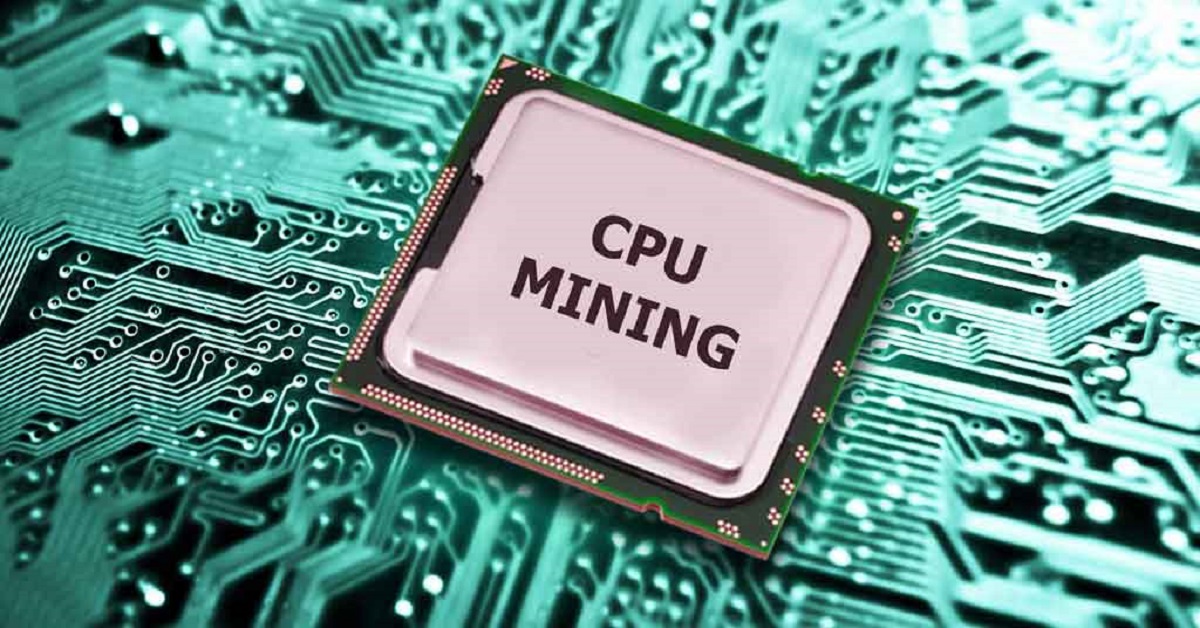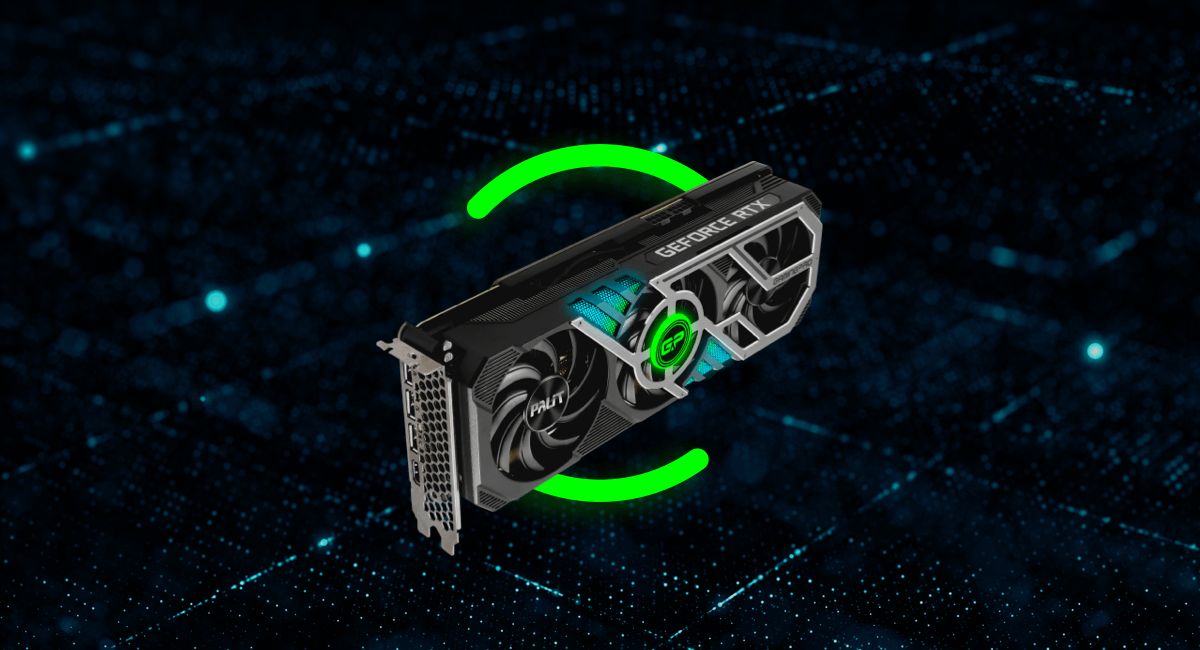Introduction
With the rising popularity and value of cryptocurrencies, mining has become an attractive way for individuals to participate in this digital revolution. Cryptocurrency mining involves using computational power to solve complex mathematical problems, which in turn validates and verifies transactions on the blockchain network. In return, miners are rewarded with units of the cryptocurrency they are mining.
Before diving into the world of cryptocurrency mining, it is crucial to understand some key factors which can greatly impact your mining journey. This includes considering the profitability of mining a particular cryptocurrency, the mining hardware and equipment required, as well as the electricity costs and mining difficulty associated with the chosen cryptocurrency.
In this article, we will explore the factors to consider before mining cryptocurrency and provide an overview of some popular cryptocurrencies that you might consider mining.
Factors to consider before mining cryptocurrency
1. Profitability: Assessing the potential profitability of mining a specific cryptocurrency is essential. Factors such as block rewards, mining difficulty, and the current market value of the cryptocurrency will influence your profitability. It is advisable to research and analyze the potential return on investment before investing time and resources into mining.
2. Mining Equipment: Depending on the cryptocurrency, you will need specific mining hardware for optimal mining performance. Graphics Processing Units (GPUs) are commonly used for mining, but some cryptocurrencies require Application-Specific Integrated Circuits (ASICs) or field-programmable gate arrays (FPGAs) for efficient mining. Consider the cost and availability of mining equipment before choosing a cryptocurrency to mine.
3. Energy costs: Mining cryptocurrencies consume significant amounts of electricity, which can contribute to high operational costs. It is important to evaluate the electricity rates in your region and calculate the potential impact on your profitability. Energy-efficient mining operations or access to low-cost electricity can greatly enhance your mining profitability.
4. Mining Difficulty: Mining difficulty refers to the level of complexity in solving mathematical problems required to mine a specific cryptocurrency. As more miners join the network, the difficulty increases, making it more challenging to mine. Understanding the mining difficulty and its potential future changes is crucial for estimating your mining rewards.
By carefully considering these factors, you can make an informed decision when choosing which cryptocurrency to mine. In the following sections, we will explore some popular cryptocurrencies that you might consider mining.
Factors to Consider Before Mining Cryptocurrency
Before diving into the world of cryptocurrency mining, there are several important factors to consider. By carefully evaluating these factors, you can make informed decisions that will greatly impact your mining journey and potential profitability.
1. Profitability: One of the key considerations before mining cryptocurrency is the potential profitability. It is crucial to assess the block rewards, mining difficulty, and the current market value of the cryptocurrency you wish to mine. The higher the potential return on investment, the more attractive the mining opportunity becomes. Conduct thorough research and analysis to determine if the chosen cryptocurrency is profitable in the long run.
2. Mining Equipment: Another vital factor to consider is the mining equipment required for optimal mining performance. Different cryptocurrencies have different mining algorithms, which may require specific hardware configurations. Graphics Processing Units (GPUs) are commonly used for mining, but some cryptocurrencies require Application-Specific Integrated Circuits (ASICs) or field-programmable gate arrays (FPGAs) for efficient mining. Take into account the cost and availability of mining equipment when selecting a cryptocurrency to mine.
3. Energy Costs: Mining cryptocurrencies consumes a substantial amount of electricity, which can contribute to high operational costs. It is essential to evaluate the electricity rates in your region and calculate their potential impact on your profitability. Consider energy-efficient mining setups or explore opportunities for accessing low-cost electricity, such as renewable energy sources, to maximize your mining profitability.
4. Mining Difficulty: Mining difficulty is a critical aspect of cryptocurrency mining. It refers to the level of complexity in solving mathematical problems required to mine a specific cryptocurrency. As more miners join the network, the mining difficulty increases, making it more challenging to mine new blocks. Understanding the mining difficulty and its potential future changes is crucial for estimating your mining rewards and overall profitability.
5. Network and Community: The strength and robustness of the cryptocurrency’s network and community should also be considered. A strong network supports secure and efficient transactions, while an active community fosters innovation and growth. Research the development team, community engagement, and ongoing updates to ensure you are investing in a cryptocurrency with a promising future.
By carefully considering these factors, you can make an informed decision when choosing which cryptocurrency to mine. Evaluating profitability, selecting the right mining equipment, managing energy costs, understanding mining difficulty, and assessing the network and community strength will significantly impact your mining journey and potential profitability.
Popular Cryptocurrencies to Consider
When it comes to mining cryptocurrencies, there are several popular options worth considering. Each cryptocurrency has its unique characteristics, mining algorithms, and potential profitability. Let’s explore some of the popular cryptocurrencies that you might consider mining:
Bitcoin:
Bitcoin is the pioneering cryptocurrency that sparked the digital currency revolution. It utilizes the SHA-256 algorithm for mining and has the highest market capitalization among all cryptocurrencies. Bitcoin mining is known for its high energy consumption and mining difficulty. However, the potential rewards can be significant, making it an attractive choice for many miners.
Ethereum:
Ethereum is a decentralized platform that enables the creation and execution of smart contracts. It utilizes the Ethash algorithm, which is memory-hard and GPU-friendly. Ethereum mining is popular due to its potential profitability and versatility. However, it’s important to note that Ethereum is planning to transition to a Proof of Stake (PoS) consensus mechanism, which will render traditional mining obsolete. Keep an eye on the Ethereum 2.0 upgrade for future mining opportunities.
Litecoin:
Litecoin is often referred to as the silver to Bitcoin’s gold. It uses the Scrypt algorithm, which is ASIC-resistant and allows for mining using GPUs. Litecoin offers faster transaction confirmation times compared to Bitcoin and has a devoted community. Although Litecoin mining may not be as profitable as Bitcoin, it can still be a viable option for those looking for an alternative cryptocurrency to mine.
Monero:
Monero is known for its focus on privacy and anonymity. It employs the CryptoNight algorithm and is designed to be ASIC-resistant, making it more accessible to CPU and GPU miners. Monero offers a higher level of privacy by obfuscating transaction details and wallet balances. Its commitment to privacy has attracted a dedicated community of miners who value anonymity in their cryptocurrency transactions.
Ripple:
Ripple is a unique cryptocurrency that aims to revolutionize cross-border payments. Unlike Bitcoin and other cryptocurrencies, Ripple does not rely on mining for transaction validation. Instead, it utilizes a consensus algorithm and operates through a network of trusted validators. While Ripple cannot be mined in the traditional sense, it still holds tremendous potential for investment and trading opportunities.
These are just a few examples of popular cryptocurrencies that you might consider mining. It is important to research and stay updated on the latest trends and developments in the cryptocurrency market. By understanding each cryptocurrency’s unique characteristics and potential profitability, you can make an informed decision on which cryptocurrency to mine based on your mining capabilities, resources, and goals.
Bitcoin
Bitcoin, created by the pseudonymous Satoshi Nakamoto in 2009, is the world’s first and most well-known cryptocurrency. It operates on a decentralized network, utilizing blockchain technology to record and verify transactions. As the pioneer of cryptocurrencies, Bitcoin has gained widespread adoption and recognition as a digital store of value and medium of exchange.
Bitcoin mining involves solving complex mathematical algorithms using specialized mining hardware, known as ASICs (Application-Specific Integrated Circuits). These powerful machines perform trillions of calculations per second to validate transactions and secure the Bitcoin network. Miners compete to solve these mathematical problems, with the first miner to find a solution rewarded with newly minted Bitcoin.
Bitcoin mining has become increasingly competitive and resource-intensive over the years. Mining difficulty adjusts every 2016 blocks, or approximately every two weeks, based on the total computational power of the network. This ensures that new blocks are added to the blockchain approximately every 10 minutes, maintaining the steady issuance of new bitcoins.
While Bitcoin mining can be lucrative, it requires significant investment in mining equipment and high electricity consumption. The cost of electricity can play a major role in determining mining profitability, as it directly affects the operational expenses associated with mining.
Bitcoin mining rewards include both the block reward and transaction fees. The block reward, currently 6.25 bitcoins per block, is halved approximately every four years in an event known as the “halving.” The next halving is scheduled for 2024, reducing the block reward to 3.125 bitcoins. Transaction fees are additional rewards paid by users for prioritizing their transactions for inclusion in the next block.
As the most valuable and widely recognized cryptocurrency, Bitcoin offers significant potential for miners. However, entry into Bitcoin mining requires substantial financial resources and access to cost-effective electricity. Many miners participate in mining pools, where they combine their computational power to increase the chances of earning rewards and smoothing out the revenue stream.
It is important to note that Bitcoin mining is a constantly evolving field, with advancements in technology and changes in the mining landscape. Miners must stay updated on mining trends and developments, as well as the potential impact of regulatory changes on the industry.
In summary, Bitcoin mining provides an opportunity to participate in the cryptocurrency revolution and potentially earn rewards by validating transactions on the Bitcoin network. However, it requires substantial investment, ongoing operational expenses, and a deep understanding of the mining landscape. As the original cryptocurrency, Bitcoin continues to be a popular choice for miners seeking to harness the potential of digital currencies.
Ethereum
Ethereum, launched in 2015 by Vitalik Buterin, is a decentralized platform that enables the creation and execution of smart contracts. It operates on its native cryptocurrency called Ether (ETH) and has become one of the most prominent cryptocurrencies in the market.
Unlike Bitcoin, which primarily serves as a digital currency, Ethereum focuses on providing a programmable blockchain platform. It allows developers to build and deploy decentralized applications (DApps) using smart contracts. Smart contracts are self-executing agreements written in code, storing and automatically executing the terms of an agreement without the need for intermediaries.
Ethereum mining involves using computational power to solve complex mathematical puzzles using the Ethash algorithm. While initially accessible to CPU miners, Ethash is now predominantly mined using Graphics Processing Units (GPUs). However, it is essential to note that Ethereum is planning to transition to a Proof of Stake (PoS) consensus mechanism, known as Ethereum 2.0, which will eventually render traditional mining obsolete.
Currently, Ethereum miners are rewarded with Ether for solving blocks and confirming transactions on the network. The mining rewards consist of the block rewards, which are generated approximately every 15 seconds, and transaction fees paid by users to prioritize their transactions. As the Ethereum network becomes more congested, transaction fees have increased, providing additional incentives for miners.
When transitioning to Ethereum 2.0, miners will no longer be required to solve complex mathematical puzzles. Instead, the network will rely on validators who lock a certain amount of Ether as collateral to participate in the consensus process. Validators will be selected to propose and attest to new blocks based on the amount of Ether they have staked. This transition aims to improve scalability, energy efficiency, and security for the Ethereum network.
While Ethereum mining may face changes with the upcoming Ethereum 2.0 upgrade, it continues to be a popular choice for miners due to its potential profitability and versatility. The development of decentralized applications and the growing popularity of decentralized finance (DeFi) have contributed to increased demand for Ethereum.
It is important for Ethereum miners to stay updated on the latest developments, timeline, and migration process to Ethereum 2.0. Although traditional mining may no longer be viable, there may be opportunities to participate in the staking process as a validator, providing an alternative way to earn rewards on the Ethereum network.
In summary, Ethereum mining offers a unique opportunity to participate in the blockchain revolution by validating transactions and securing the Ethereum network. With the upcoming transition to Ethereum 2.0, the mining landscape is evolving, and miners must adapt to stay abreast of these changes. The continued growth of decentralized applications and the anticipated improvements in scalability make Ethereum an attractive option for miners seeking to be part of the innovative world of blockchain technology.
Litecoin
Litecoin, created by Charlie Lee in 2011, is often referred to as the “silver” to Bitcoin’s “gold.” It is a peer-to-peer cryptocurrency that offers faster transaction confirmation times and a different mining algorithm than Bitcoin.
Litecoin uses the Scrypt algorithm, which is considered to be ASIC-resistant. This means that it is designed to discourage the use of specialized mining hardware known as Application-Specific Integrated Circuits (ASICs), allowing for mining with consumer-grade hardware such as Graphics Processing Units (GPUs).
Litecoin was one of the first cryptocurrencies to implement Segregated Witness (SegWit), a protocol upgrade that improved transaction capacity and enabled the implementation of the Lightning Network. These enhancements contributed to faster and cheaper transactions on the Litecoin network, making it a popular choice for merchants and individuals who value quick and cost-effective payments.
Litecoin’s mining rewards and block generation are similar to Bitcoin. Miners solve mathematical puzzles and compete to find new blocks on the blockchain. The mining rewards include a fixed block reward, currently set at 12.5 Litecoins, which is halved approximately every four years. The next halving is expected to occur in 2023, reducing the block reward to 6.25 Litecoins.
Litecoin’s mining community has grown over the years, and many miners participate in mining pools to increase their chances of earning rewards more regularly. Mining pools allow miners to combine their computational power, contributing to the overall hashing power of the network.
While Litecoin’s market capitalization and value are generally lower than Bitcoin’s, it still holds a significant position in the cryptocurrency market. Litecoin’s reputation, established network, and active community have contributed to its ongoing popularity and sustained mining opportunities.
It’s important to consider the potential profitability of Litecoin mining, taking into account factors such as the cost of mining equipment, electricity expenses, and the current market value of Litecoin. Additionally, staying informed about changes in mining difficulty and Litecoin’s roadmap can help miners anticipate and adapt to potential challenges or opportunities in the mining landscape.
Litecoin’s longevity and its ability to maintain a strong position in the cryptocurrency market make it an attractive choice for miners seeking alternative options to Bitcoin. By leveraging its faster transaction confirmation times, active community, and potential profitability, Litecoin continues to provide opportunities for mining enthusiasts.
Monero
Monero, launched in 2014, is a privacy-focused cryptocurrency that aims to provide secure, untraceable, and private transactions. It utilizes a decentralized, open-source blockchain and the CryptoNight algorithm for mining.
One of the key features of Monero is its enhanced privacy and anonymity. Unlike Bitcoin, where transactions are publicly visible on the blockchain, Monero employs various cryptographic techniques to obfuscate transaction details, including sender, recipient, and transaction amount. This ensures that transactions cannot be easily traced back to their origin.
Monero’s mining algorithm, CryptoNight, is designed to be ASIC-resistant, allowing for mining with consumer-grade hardware such as CPUs and GPUs. This decentralized approach to mining ensures a more equitable distribution of mining rewards, as it discourages the concentration of mining power in the hands of a few specialized mining operators.
Monero mining operates on a proof-of-work (PoW) consensus mechanism, where miners compete to solve complex mathematical puzzles. Successful miners are rewarded with newly minted Monero coins, incentivizing them to contribute their computational power to the network.
Monero’s commitment to privacy and security has earned it a dedicated community of users and miners who value the importance of financial privacy. The coin’s fungibility, meaning that each unit is mutually interchangeable and indistinguishable from others, is a crucial attribute for those seeking private transactions.
It is worth noting that Monero’s privacy features have drawn some scrutiny from regulatory bodies, as they can be viewed as facilitating illicit activities. However, Monero remains popular and continues to gain recognition for its advanced privacy features and robust technology.
As with any cryptocurrency, factors such as mining difficulty, electricity costs, and the market value of Monero should be considered when determining the potential profitability of mining. Additionally, staying informed about Monero’s community updates and developments can help miners adapt their strategies based on any changes in the mining landscape.
Overall, Monero offers a unique mining opportunity for individuals who prioritize privacy and seek a cryptocurrency that prioritizes untraceable transactions. Its ASIC-resistant mining algorithm, commitment to privacy, and active community make it an appealing choice for miners looking to contribute to a secure and private cryptocurrency ecosystem.
Ripple
Ripple, launched in 2012, is a unique cryptocurrency that aims to revolutionize cross-border payments and enable fast, low-cost transactions. Unlike traditional cryptocurrencies, Ripple does not rely on mining for transaction validation.
Ripple operates on a consensus algorithm known as the Ripple Protocol Consensus Algorithm (RPCA), or RippleNet, which is a network of trusted validators. Validators are chosen by Ripple and include financial institutions, payment providers, and other trusted entities. These validators collectively agree on the validity and order of transactions, ensuring the integrity of the Ripple network.
As a result of this consensus mechanism, Ripple transactions are confirmed and settled within seconds, offering significant advantages over traditional banking systems or other cryptocurrencies that rely on mining. This makes Ripple particularly appealing for financial institutions and companies seeking faster, more efficient cross-border transactions.
While Ripple cannot be mined in the traditional sense, it still presents opportunities for investors and traders. Ripple’s native cryptocurrency, XRP, plays a crucial role within the Ripple ecosystem as a bridge currency. It is used to facilitate seamless currency conversion during transactions, helping to reduce costs and improve liquidity.
XRP can be acquired through exchanges and used for trading, investment, or as a means of sending and receiving value within the Ripple network. Its substantial market capitalization and adoption by financial institutions contribute to its liquidity and potential investment opportunities.
Ripple’s focus on facilitating real-time, low-cost international payments has gained traction globally. Its partnerships with major financial institutions and remittance services have helped establish Ripple as a leading player in the fintech industry.
It is important to note that Ripple’s unique consensus mechanism and its association with financial institutions have sparked debates within the cryptocurrency community regarding its decentralized nature and compliance with the ethos of traditional cryptocurrencies. However, Ripple’s goal of revolutionizing cross-border payments and its continued growth within the financial industry make it an intriguing option for investors and traders alike.
As with any investment or trading opportunity, it is important to stay informed about Ripple’s developments, partnerships, and industry regulations. By understanding Ripple’s ecosystem and potential market impact, investors can make educated decisions regarding XRP and its potential for growth.
In summary, Ripple’s innovative approach to cross-border payments and its consensus algorithm offer unique opportunities for users, investors, and traders. While Ripple cannot be mined, its native cryptocurrency XRP provides liquidity and investment options within the Ripple ecosystem. By staying informed and understanding Ripple’s position within the financial industry, individuals can make informed decisions about participating in this innovative cryptocurrency network.
Other Profitable Cryptocurrencies
While Bitcoin, Ethereum, Litecoin, and Ripple are some of the most well-known and widely mined cryptocurrencies, there are also other profitable cryptocurrencies that deserve attention. These alternative cryptocurrencies offer unique features, mining algorithms, and potential profitability for miners.
1. Dash:
Dash, short for “digital cash,” focuses on fast and private transactions. It utilizes a hybrid mining algorithm known as X11, which combines a series of cryptographic hashing functions. Dash offers enhanced privacy features through its PrivateSend feature, which obfuscates transaction details, and its decentralized governance and treasury system.
2. Zcash:
Zcash is a privacy-focused cryptocurrency that offers optional transparent or shielded transactions. It uses the Equihash algorithm for mining and employs zero-knowledge proofs, allowing users to verify transactions without revealing sensitive information. Zcash provides enhanced anonymity compared to many other cryptocurrencies.
3. Cardano:
Cardano is a blockchain platform that aims to provide a secure and scalable infrastructure for the development of decentralized applications and smart contracts. Cardano uses the Ouroboros proof-of-stake consensus algorithm, which rewards participants based on the amount of ADA (Cardano’s native cryptocurrency) they hold and stake on the network.
4. EOS:
EOS is a blockchain platform that focuses on scalability and ease of development for decentralized applications. It operates through a delegated proof-of-stake consensus mechanism, with selected block producers validating and confirming transactions. EOS offers faster transaction processing times and low fees, making it an attractive choice for developers and users.
5. Stellar:
Stellar aims to provide efficient cross-border payments and enable token issuance. It employs the Stellar Consensus Protocol, which relies on a network of trusted validators to agree on the state of the blockchain. Stellar’s native cryptocurrency, Lumens (XLM), serves as a bridge currency for facilitating seamless asset transfers and conversions.
These are just a few examples of other profitable cryptocurrencies worth considering for mining. As the cryptocurrency market continues to evolve, new projects emerge, and technologies advance. It is essential to conduct thorough research, analyze the potential profitability, and evaluate the unique features and community support of each cryptocurrency before making mining decisions.
Keep in mind that mining profitability can be influenced by factors such as mining difficulty, market demand, electricity costs, and the value of the cryptocurrency in the market. Staying informed and adapting to changing market dynamics is crucial for successful mining ventures in the ever-expanding world of cryptocurrencies.
Researching and Choosing the Right Cryptocurrency for You
As an aspiring cryptocurrency miner, it is essential to carefully research and choose the right cryptocurrency that aligns with your mining goals, resources, and risk appetite. Here are some key considerations to help guide your decision-making process:
1. Purpose and Use Case:
Understand the purpose and use case of the cryptocurrency you are interested in mining. Are you drawn to cryptocurrencies that prioritize peer-to-peer transactions, privacy, or smart contract functionality? Identifying the specific goals of a cryptocurrency can help align your mining efforts with your own beliefs and interests.
2. Mining Algorithm:
Study the mining algorithm required to mine the cryptocurrency. Different cryptocurrencies employ various algorithms such as SHA-256, Ethash, CryptoNight, or Equihash. Familiarize yourself with the hardware requirements for each algorithm, as well as the availability and cost of mining equipment for optimal performance.
3. Profitability:
Evaluate the potential profitability of the cryptocurrency you intend to mine. Consider factors such as block rewards, transaction fees, mining difficulty, and electricity costs. Online mining profitability calculators can provide insights into potential earnings based on current market conditions.
4. Community and Development:
Assess the strength of the cryptocurrency’s community and development team. Look for active communities and forums where you can engage in discussions, seek advice, and gain insights from experienced miners. Additionally, research the development team’s track record, ongoing updates, and future plans to gauge their commitment to innovation and growth.
5. Regulatory and Market Factors:
Stay informed about regulatory developments and market trends that may impact the cryptocurrency you plan to mine. Changes in regulations, government policies, or market sentiment can have significant effects on the value and viability of a cryptocurrency. Be prepared to stay adaptable and adjust your mining strategy accordingly.
6. Risk Management:
Take into account your risk tolerance and the potential risks associated with mining a specific cryptocurrency. Cryptocurrency mining involves investment in equipment, electricity costs, and exposure to market volatility. Diversifying your mining portfolio or considering mining pools can help mitigate some of the risks involved.
By thoroughly researching and considering these factors, you can make an informed decision when selecting the right cryptocurrency for your mining endeavors. Remember that the landscape of cryptocurrencies is constantly evolving, and staying informed about industry updates and regulatory changes is crucial for long-term success in the world of cryptocurrency mining.
Conclusion
Choosing the right cryptocurrency for mining is a critical decision that can greatly impact your mining journey and potential profitability. By considering factors such as the purpose and use case of a cryptocurrency, the mining algorithm required, and the potential profitability, you can make informed decisions that align with your goals and resources.
Bitcoin, Ethereum, Litecoin, Monero, and Ripple are among the popular cryptocurrencies that offer unique features, mining opportunities, and potential rewards. Each cryptocurrency has its own strengths, whether it be Bitcoin’s status as the pioneer of cryptocurrencies, Ethereum’s focus on smart contracts, or Monero’s enhanced privacy features.
It is also essential to evaluate other profitable cryptocurrencies, such as Dash, Zcash, Cardano, EOS, and Stellar. These alternative options may present unique investment and mining opportunities based on their respective characteristics and market demand.
Researching the purpose and use case of a cryptocurrency, understanding the mining algorithm required, assessing profitability, and staying informed about regulatory and market factors are crucial aspects of your decision-making process. Additionally, considering the strength of the cryptocurrency’s community and development team, and managing risk appropriately, can contribute to a successful mining journey.
As the cryptocurrency landscape continues to evolve, it is important to adapt and stay knowledgeable about industry trends, regulatory changes, and technological advancements. Keep in mind that mining profitability can fluctuate based on factors such as mining difficulty, market demand, and electricity costs.
Ultimately, the right cryptocurrency for mining will depend on your individual goals, resources, and risk tolerance. By conducting thorough research and analysis of the available options, taking into account the factors discussed, and staying informed, you can make educated decisions and optimize your chances of success in the dynamic and exciting world of cryptocurrency mining.

























